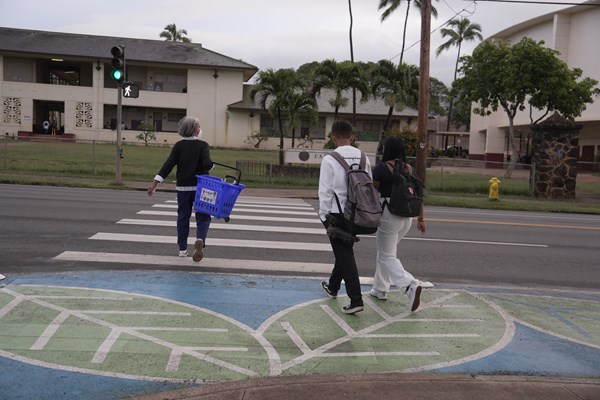Hawai‘i’s ‘Safe Routes to School’ community voices highlight need
Apr 08, 2025

With little less than a month left of the 2025 State Legislative Session, Ulupono Initiative launched a new series on social media to bring awareness to the importance of the Safe Routes to School Program (SRTS). This series features students, parents and community members who benefit from SRTS.
“This is a chance to amplify the stories of people who would benefit tremendously from the program in the hopes of gaining more community support for Safe Routes to School,” said Kathleen Rooney, Ulupono Initiative director of transportation policy and programs. “These stories illustrate how improved infrastructure creates safer communities for everyone."
Created through Act 244 (SLH 2023), the state’s SRTS program aims to encourage more walking and biking for students to and from school. This legislative session, the Hawai‘i Department of Transportation is seeking $13 million from the Legislature for the SRTS Special Fund in fiscal year 2025-2026. The critical funding would fuel important projects that create safe pathways for keiki statewide and access to future surcharge revenues up to $500,000 annually.
Supporting Data
Schools with SRTS interventions have seen a 44-75% decline in pedestrian injuries in school zones and improved attendance rates of up to 2%. Studies also show walking and bicycling to school increase by about 5% each year where SRTS programs are in place.
The program’s potential reach is substantial. Analysis shows 77% of Hawai‘i’s population lives within one mile of a public school, making walking and biking viable options for many families if safe infrastructure is in place.
On Oʻahu, where 87% of residents live within a mile of a public school, projects like the Kamehameha Highway shoulder bikeway from Kuahelani Avenue to Meheula Parkway are already making a difference. Similarly, on Molokai, a dedicated pedestrian facility from Kalae Highway to Molokai High School now allows students to safely walk to school.
Benefits Beyond Safety
Households could save up to $12,000 (excluding costs such as vehicle insurance, fuel, maintenance and repair, etc.) per year by shedding a car, while school districts could see relief from bus program costs that exceed $6.3 million annually. In urban Honolulu, (where up to 50% of all trips are five miles or less occur) reducing school-related vehicle traffic helps decrease congestion and improve air quality.
Follow the series on:

